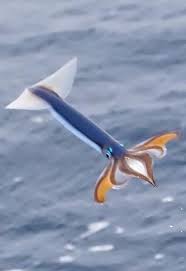A megagram is 1000 kg, by definition. It’s symbol is Mg.
In metric countries, we just use the word “ton” as shorthand/slang for it, since it is an easier term and was well known.
The only reason the US calls it a metric ton, is because they have archaic units (long and short tons).
Metric countries don’t call it a metric ton.
Canada does, because we’re mostly metric but still do enough business with the US that we’re sorta half and half
Yeah, but what about the metric shit-ton?
We call it a metric tonne in Canada.
There’s also short ton and long ton which have to be differentiated, but no one ever knows which one they are using.
That’s because you only metricated 40y ago.
deleted by creator
I only use that term when I call a lot of items “a metric fuckton of stuff”
There’s nothing wrong with doing so. Perfectly up to you, and everyone would know how much it is.
I sometimes use millitonne (mt) instead of kilogram to keep people on their toes. I’ve learned that some people doesn’t like to have their weight measured in any kind of tonne.
As someone not born to the metric system but who’s tried to lean into it, this is something I’ve always found a little difficult. “A thousandth of a meter” isn’t a useful concept to me. I don’t think we are good at conceiving of things in their thousands, with good proportionality. I would rather just have a singular name like “squajibbles” for milimeters and memorize an intuitive sense of what that is. I realize I can do that with the word “milimeters” too but my brain sometimes gets stuck on unpacking the math. I was reading Dune last night and the expression “millions of decaliters” really stopped me in my tracks. I felt like I had to start with one liter, a sodastream bottle, and multiply it up. I’d rather have some concept like “fuckajiter” which means an Olympic swimming pool and work with that.
Not really being critical here. Metric is better. But intuitiveness is one of the qualities of a measurements system that makes it more or less appealing and I’ve always found imperial has a slight edge there that makes it harder to just drop as a complete loser of a system.
EDIT: yes, internet, I know the only legal thing to say about metric / imperial is that metric is the only system and imperial is for American asshole cavemen. Oh well. Fuck me for offering thoughts from someone trying to move to metric. I should hide my shame.
I dont see a Millimeter as a thousandth of a meter, I see it as a tenth of a centimeter
Scale is what matters. when I measure something in meters I dont care about the exact millimeters
I would rather just have a singular name like “squajibbles” for milimeters and memorize an intuitive sense of what that is. I realize I can do that with the word “milimeters” too but my brain sometimes gets stuck on unpacking the math.
This is, in fact, exactly what metric users do in their daily lives… We don’t do math in our heads every time we measure something. We know from experience how large all the units are and pick the one that’s appropriate for a given situation, just like you do.
When you measure something using inches, you don’t then say “it’s this many 1/36ths of a yard” unless you specifically need to convert it into yards for some reason.
Similarly, when we measure something using millimeters, we don’t say “it’s this many 1/1000ths of a meter”. It’s just a millimeter. Don’t get hung up on the prefix, just ignore it and treat it as a unit of a particular size.
I figured that’s what people born to metric do. It’s different when you’re learning it as an outsider, as an adult consciously absorbing the system.
As a Canadian with a living memory of when we made the switch here, I feel your pain. Though to be fair, I was a child at the time and so probably had an easier time of it? But in some ways, I’m still transitioning to this day!
Take temperature, for example. When Canada went metric, all the weather reports switched to Celsius but our indoor thermometers and thermostat were still in Fahrenheit. So I wound up in a situation in which outdoor extreme temperatures became more relatable in C, while typical indoor temperature ranges sounded better in F. I particularly liked winter temperatures in C. It was so intuitive that < 0 means snow and > 0 means rain.
Today, I am more comfortable with C for indoors as well, but not for cooking. I guess that’s because a lot of recipes still say set the oven to 350 or check the meat on the grill is at least 160?
You just named the main advantage of the metric system as unintuitive and the opposite (squajibbles, fuckajiter, feet, toes, elbows) as the main advantage of the imperial system. Yet, you say that metric is better. I don’t understand. Why do you find metric better then?
I understand that intuitiveness is subjective and that how a person is raised or lectured alters the view on what is intuitive. From a logical perspective, however, I find the metric system much more intuitive as the names of the metrics denote exactly what we are dealing with (except for the case of tonnes). Yes, maybe the wording is confusing. But from the word itself you can infer what is meant, given you know what milli, giga, mega, nano, pico, etc mean. Its just times or divided by 1000. What is feet in miles or nautical miles? Gotta look that up!
Well metric is obviously better for conversions which helps a great deal. I think my intuition problem either goes away with extensive use or being born to it.
I do really like the “foot” as a highly human-relatable unit. At 4 feet tall, a man is aberrantly small or a dwarf. At 5 feet tall, a man is normal but short. At six feet high, a man is tall. At 7 feet tall, he is aberrantly big. It’s a highly usable human scale thing and there isn’t a great analogue in metric. Maybe you get used to decimeters (wait… decameters?) too but they are less commonly used. Giving someone’s height in centimeters has never gotten familiar for me. And the deca/deci thing I think undermines your intuitive point a little. These are easily confused.
I think millimeters and milliliters are great for precision. Imperial sucks below 1 inch or 1 ounce. All fraction bullshit.
So each system has its pluses on intuition. But metric has the conversions advantage and the precision advantage so that’s what wins for me.
if you actually use the metric system, millimeter would become that “singular name” you memorize for a certain length. but you could also tell from the name alone what’s it about roughly, squajibbles on the other hand…
I noticed this with vehicles. Odo has 100,000 km on it? Nah, it’s 100 megameters. It just sounds cooler
0.1 gigameters
deleted by creator
Units closer related to everyday stuff are those that stick around. Like horse power or km. People don’t use Mm but instead 1’000s of km, even into the million km for cars. Even in space they still tend to use km like for the distance to the moon or sun. Only once the distances get absurdly large is there a shift to either another unit (light years) or the use of different notation (like 3.14E12 m).
As a Swede, using units that give numbers above ~100 starts to get unwieldy. Hence why we use mil (1 Scandinavian mile = 10 km) once we get to triple digits in km. “It’s 60 mil to Stockholm” is immensely more natural than “it’s 600 km to Stockholm”.
That is fascinating! I had heard of the “metric mile” as being 1500m: the closest you can get to running a statute mile at international competitions.
But I like this 10km mile idea! We could use something like that here in Canada. Sometimes we say “klick” here to mean km, so I have tossed around terms like “decaklick” and “hectoklick” but people look at me funny.
We’ve had different mil definitions in Scandinavia before, but at some point Sweden and Norway agreed to unite at 10 km, which is a really useful unit. Denmark just didn’t do it. They’ll give distances in hundreds of kilometers.
I love this! Let’s use all the prefixes!
It’s always been a pet peeve of mine that Sweden is seemingly the only country that uses dl (deciliter) and hg (hectogram, but we just say hekto, just like with kilo), which are to me vastly more useful units as they’re close to what you’re measuring. 2 hg salami or candy or whatever instead of 200 g, and 3 dl water instead of 30 cl or, god forbid, 300 ml.
I see cooking shows from countries that normally use imperial, using metric by measuring everything in milliliters. It makes no sense! No recipe needs that resolution.
The astronomical unit AU is commonly used for things in the solar system. 1 AU is roughly the average distance to the sun, about 150 000 000 km
I measure my fuel consumption in square millimeters, thank you very much.
I get the joke. But it does not actually work. The unit is meter (to some power) but it is not the same meter. One is for a specific liquid, the other for a driving distance. That information was just omitted to begin with, since everyone knows what is meant with the regular units/expression. But when you would want to do that, you need to put that information back at the end.
Am not sure I completely agree with you. Some of the archaic units are still used because USA is so dominant in both technology and advertisement. People living in other parts of the world know exactly how much inch is or gallon. Just like most of the world knows English, even though it’s not the easiest language to learn. Simply GB was too big and influential and they left their mark.
As far as Mm is concerned, why would you do that? If you were making a small panorama or model you wouldn’t use 0.00001km, would you? You pick units that are most convenient for the purpose. Kilometers are used for cars and things related to traveling because fuel economy is expressed in such unit, car’s own computer measures distance in same unit, speed is measured in same unit. Why would anyone use anything else? 0km until 1000km is perfectly intuitive scale which doesn’t get crossed too much. For the very same reason that’s why we use square meters to measure surface of a home, because they never go into square kilometers. And square milimeters is pointless.
It’s all about practicality. SI system is great because it allows users to use same unit in different scale and have it be intuitive and easy to convert. Also when it comes to astronomy, there are many units you skipped there. LY is too big and rarely used unless it’s to describe distances to other galaxies and size of those. There are AU as some one else mentioned. Earth size, etc. But rest assured when scientists are trying to calculate something, they still revert to good old reliable SI system.
Nobody knows what a gallon/yard/… is outside the USA.
English is super easy.
I don’t get your stance on Mm. First you use it for tiny values and say that is stupid. Then you hint that going above 1’000 km the km should not be used anymore. Also, 1’000 km are nothing in terms of vehicles etc., driving that distance in one day is nothing super special. A car does 100s of 1’000 km. Hence my point.
I didn’t skip anything, I named some examples to prove or better explain my point.
One magnesium please. yes I’m sure, only one.
One single atom?
one mole ?
What do blind, tunnel burrowing animals have to do with it?
chemistry mole
Who let them have professions?
Megagram is the official SI term for the weight. Metric tonne is non-SI but happens to be equivalent to a megagram and became the more common parlance (where I am, at least) by historical accident.
Pretty sure they tried to mimic existing units/terms to make it “easier”. So they used tonne to mimic ton.
They didn’t mimic existing units, an imperial ton is close to a metric ton, and the spelling tonne is just an alternative spelling of ton. In some parts ton means imperial ton, and tonne means metric ton, but it’s not standardized. In German, where the word originally comes from, it’s Tonne (btw the e is not silent, it’s [ɛ] as in let. Or in Porsche (no, it’s not pronounced porsh…).)
They mimicked existing terms, otherwise we wouldn’t have ever had the term metric tonne. It would have been called a megagram.
Sounds good to me 👍
Seconded. Who do we need to update?
I’ll call the king!
Ummm… I seem to have misplaced the number.
No worries he prefers email these days
What is this metric shit? I’m an American! I measure weight in American units like the hundredweight and the truss and the slug!
I don’t know what a hundredweight is, but I’m just guessing based on American experience that it’s a unit of volume equal to 132 quarts.
I’m an engineer, and I make it a point to teach young engineers that “a ton” can mean any one of three things:
- Short ton = 2000 lb
- Long ton = 2240 lb
- Metric ton = 1000 kg = ~2204 lb
And which is being used is often not spelled out, but is just known from context, and usually should be clarified. I once nearly got in trouble by thinking a measurement was in short tons when it was actually metric tons.
So my own act of rebellion is to use “Mg” when I’m writing my personal notes.
There is metric ton and this imperial shit. And thanks to metric being highly systematic, “Mg” (megagrams) is actually correct - “ton” is just a shorthand.
In Italian schools they teach it as Megagram, since ton is an old term which is non compliant with the SI
I’ve often wondered why the kilogram was not called the gram when the former is commonly cited as the official unit of mass? I guess it doesn’t really matter much since it’s easy to convert between units. That’s sort of the point of metric, but still…
Cuz the gram came before the SI system and the kilogram is a much more useable unit. The original m-g-s are based on physical things, like m being a subdivision of the length from the North Pole to the Equator going through Paris, and s being related to the time of a pendulum with certain length swinging or smth
A gram is the weight of 1 mL of water, roughly.
Which is 1 cm³ of water if we want to stay in SI. And if that’s the basis for it, then why not make a gram = the weight of 1 dm³ of water and then we wouldn’t need a prefix for weights in the stuff-we-usually-carry-around range. It still doesn’t make sense to me to have a prefixed unit being the base unit.
A cubic meter of water should have been a liter and weighed a gram.
It’s called history, blame the French
I always do.
I remember in some old astronomy textbooks they used units based on CGS (cm-g-s) as opposed to MKS (m-kg-s). It was pretty weird, as they had terms to go with that system like dynes instead of newtons for force. But at least it wasn’t imperial.
Apparently it was going to be, but they chose the kilogram instead.
Fair enough. But it’s interesting right? Like the litre lines up with the kilogram (for fluid measures) but they don’t call it a kilolitre for consistency’s sake?
This is one of two “warts” that I know of in SI. They wanted a coherent set of units, coherent meaning that no nuisance constants are required to convert between dimensions in the set. The system at the time was gram-centimeter-second. To expand things to all dimensions I suppose it was simpler to use the larger units, like J = kg m^2 / s^2 rather than trying to make a new unit for energy, etc. You’d think they’d have just come up with a new name for mass units and defined it as 1 kg, something like 1 prot = 1 kg, then all of the coherent units would be ones without prefixes. Someone must have really being going to bat for the word “gram” though, because now we have this pretty stupid rule that the coherent units are all of the ones without prefixes, except mass, which has the coherent unit of kg. And then also, prefixes are used to scale the coherent units by appending the appropriate letter to the coherent unit symbol, except for mass, for which g is treated as the coherent unit, even though it’s not.
It’s not the worst thing, but it’s pretty stupid to explain.
until you realize, that “second” is also not the base unit. it’s not at obvious because it isn’t metric, but second is just the second subdivision of an hour (the first being the minute)
There are no longer any base units as of the 2019 SI redefinition, but prior to that the second was the base unit for time. Hour and minute we’re defined based on that. And now even though a second isn’t a base unit, hour and minute are still defined based on the second, not the other way around. It’s been that way for several decades now. Maybe you’re thinking of some no-longer-used system.
Okay I’ll bite. What’s the other “wart”?
The mole is defined based on the gram and not the kilogram, even though the kilogram is the coherent unit of mass. I don’t have an example, but it probably results in a bit of extra math somewhere. Again, who knows why. Apparently the mole has had conflicting definitions in the past, and one of them was based on the kilogram, so it seems like this would have been easy to do. Again, the gram is involved - maybe the two things are related?
Apparently, the SI base units have been redefined, and the link between moles and kg was severed in 2019?
I was vaguely aware of this shake-up after reading someplace that the kg had a new definition in terms of fundamental physical constants rather than the old one based on an official standard kg. This was basically a block of metal sitting in a lab someplace in France. But TIL other base unit definitions were also tweaked at that time.
Their definitions are no longer related, but their sizes are still roughly the same relative to each other. I mean that the unit for amount of substance is based on 12 grams of C, instead of 12 kg of C, despite the kilogram being the unit for mass. Some fields used to use that unit and called it a kg-mole, but that notation would be pretty confusing and you would want to have a different name. https://en.m.wikipedia.org/wiki/Mole_(unit)
I think the 2019 redefinition is really neat. They changed the system so that constants are defined instead of measured, in a way that makes estimates more precise. It’s worth reading about if you’re interested in the stuff.
I prefer Gigamilligram
After reading the comments, I’ve noticed a point that is missing from the other comments. We like to measure things relative to other things. Therefore we should use a unit of measure which you can compare the entire range of expected values for that question simply.
For example how far away is my nearest town centre? 1km. How far away is the nearest city? 10km. How far is it across the country? 500km, How far is it across the continent? 5,000km. How far is it around the equator? 40,000km.
By using all km in this case it’s easy to get an idea of the relative distances. But you wouldn’t measure your height as 0.0018km. Just my own thoughts!
That’s what unit prefixes are for… you can measure your height in cm
Exactly!
You measure your height in metres as in 1.8m or 180cm and for little things it’s mm (millimetres) or cm if it’s less then 1m.
It scales alot easier then the US measurement system of anything other then the simple metric system.
Lol imagine a country only 500km across.
A self-referencing metric tonne should be called a Metagram.










